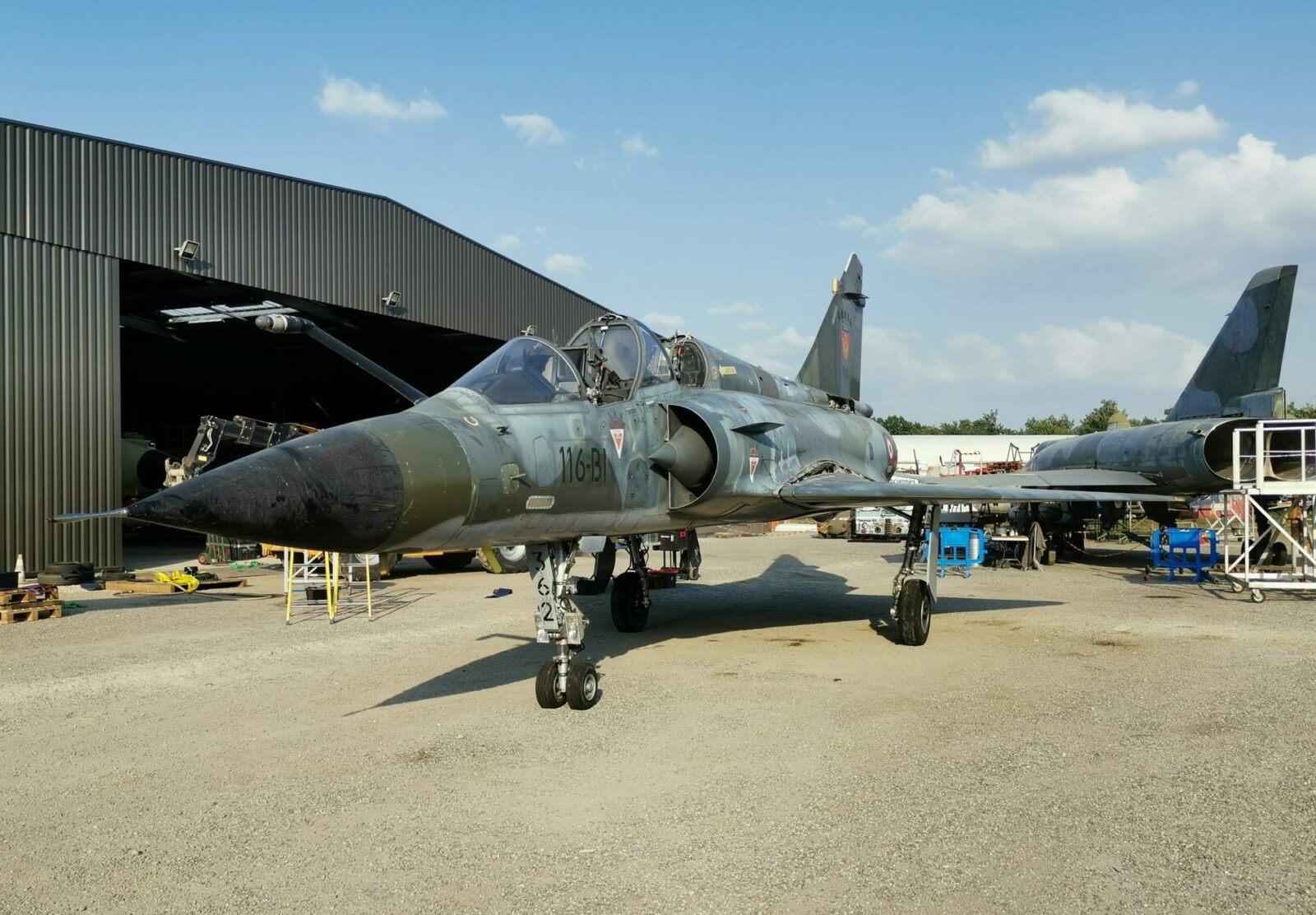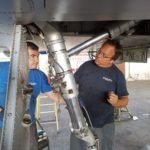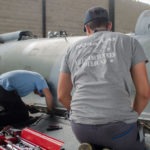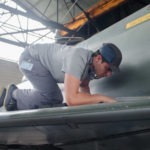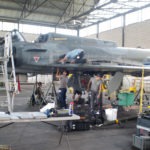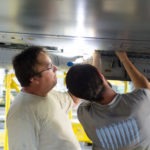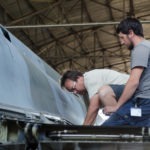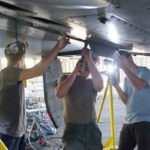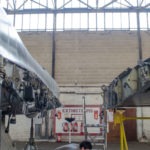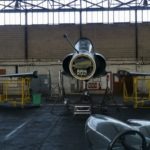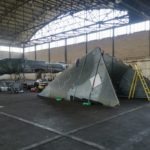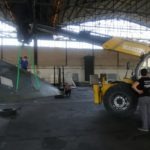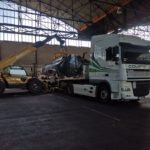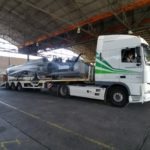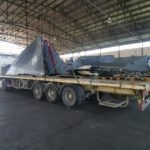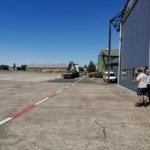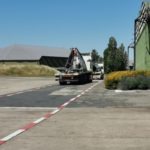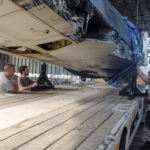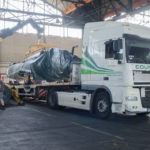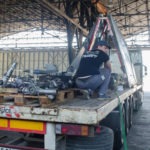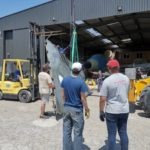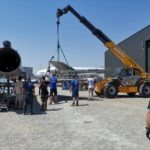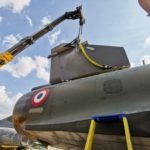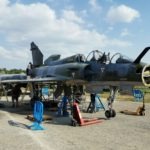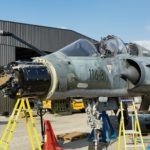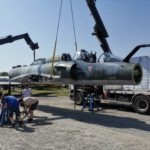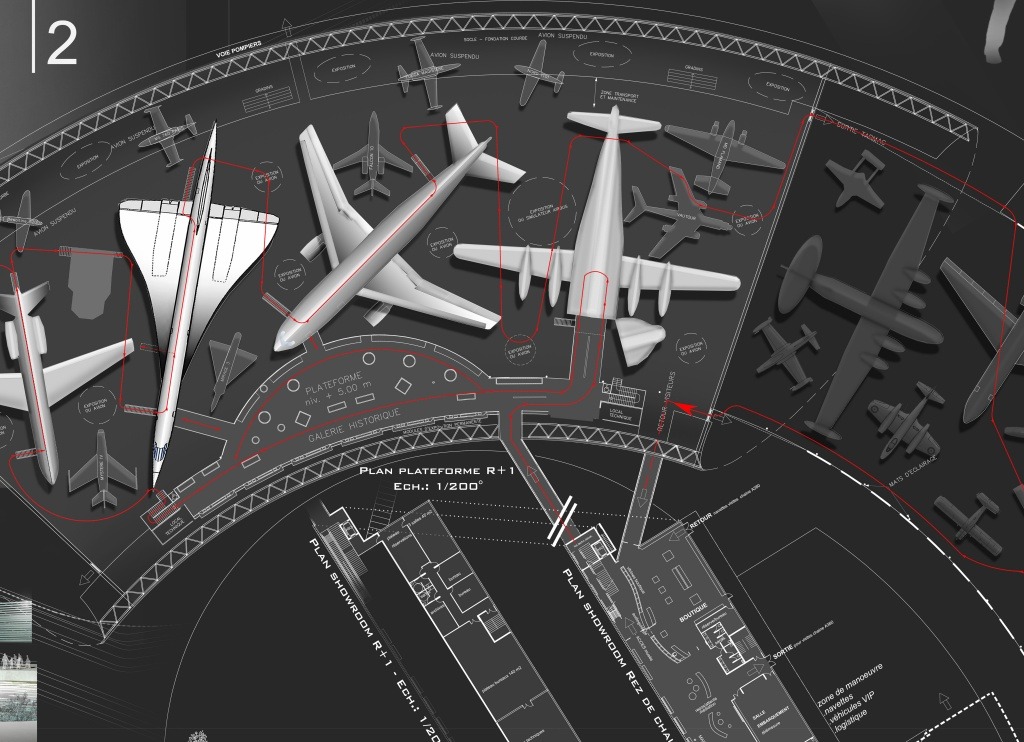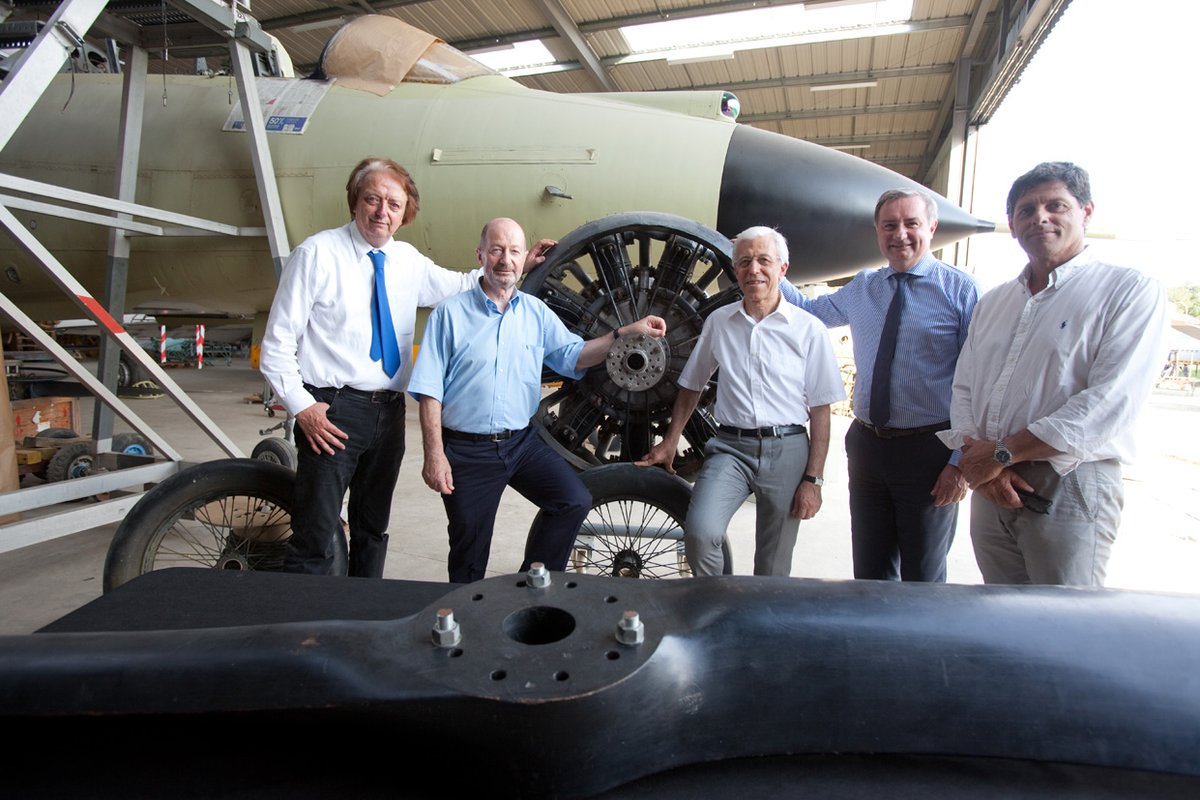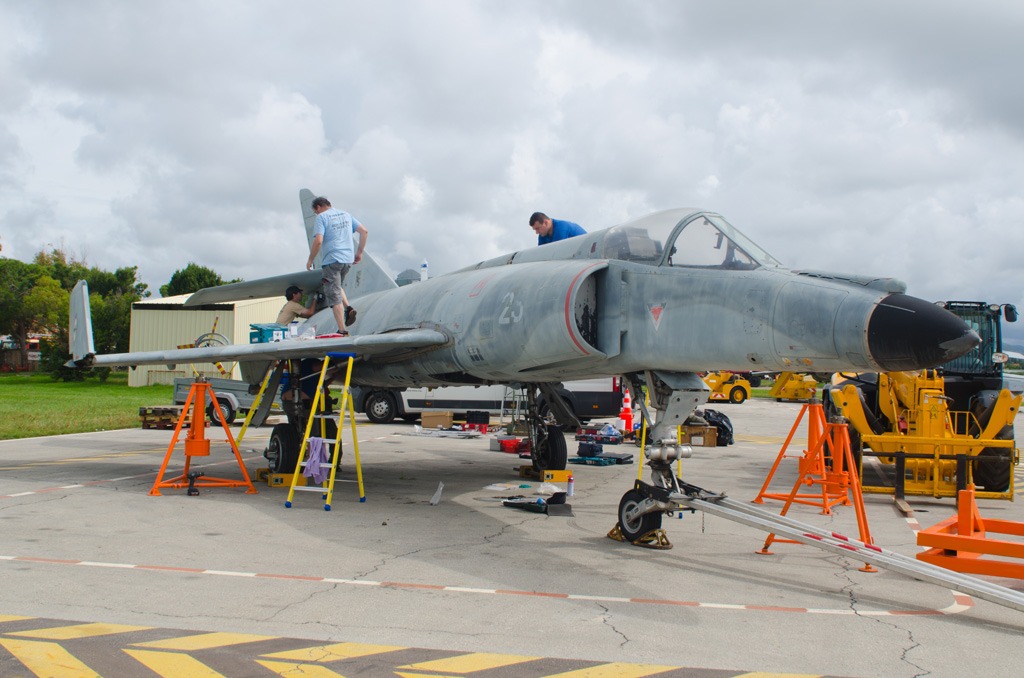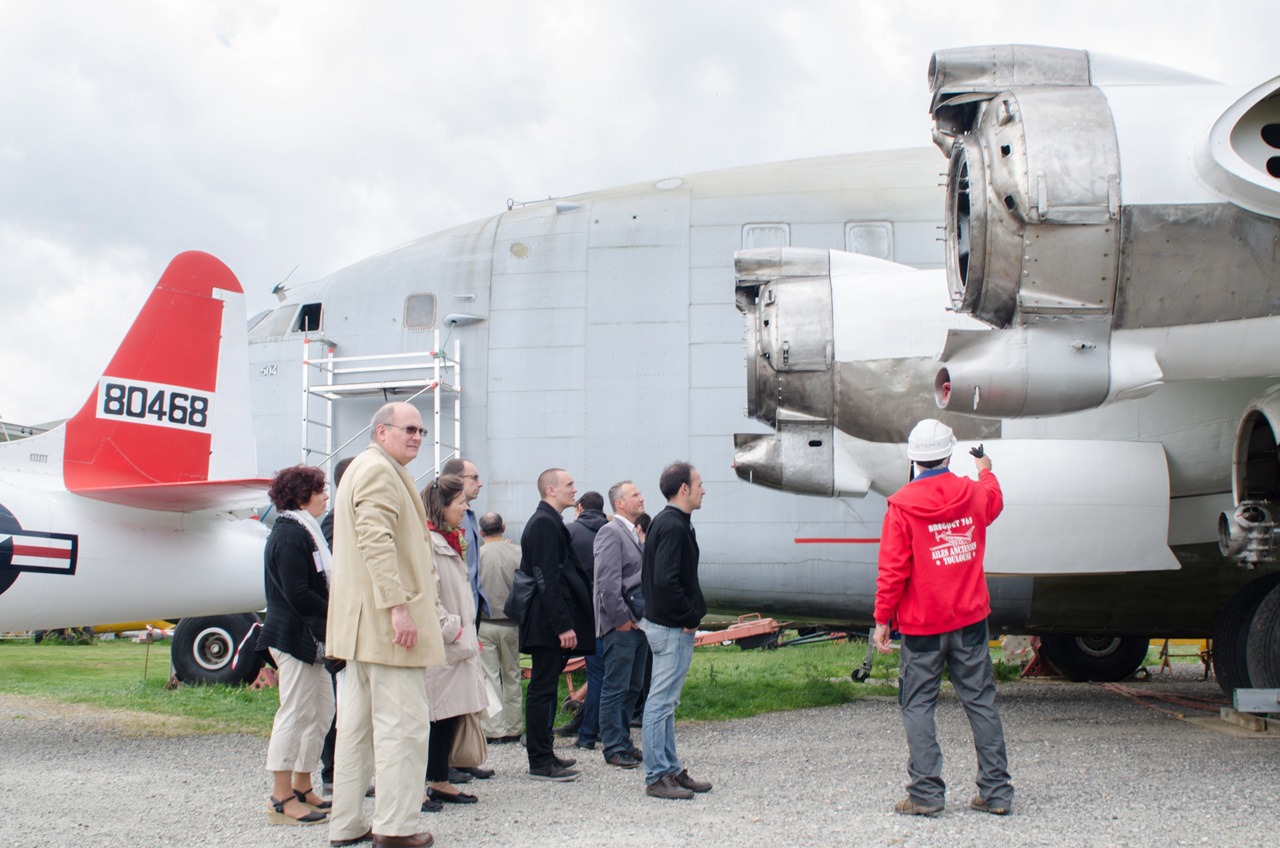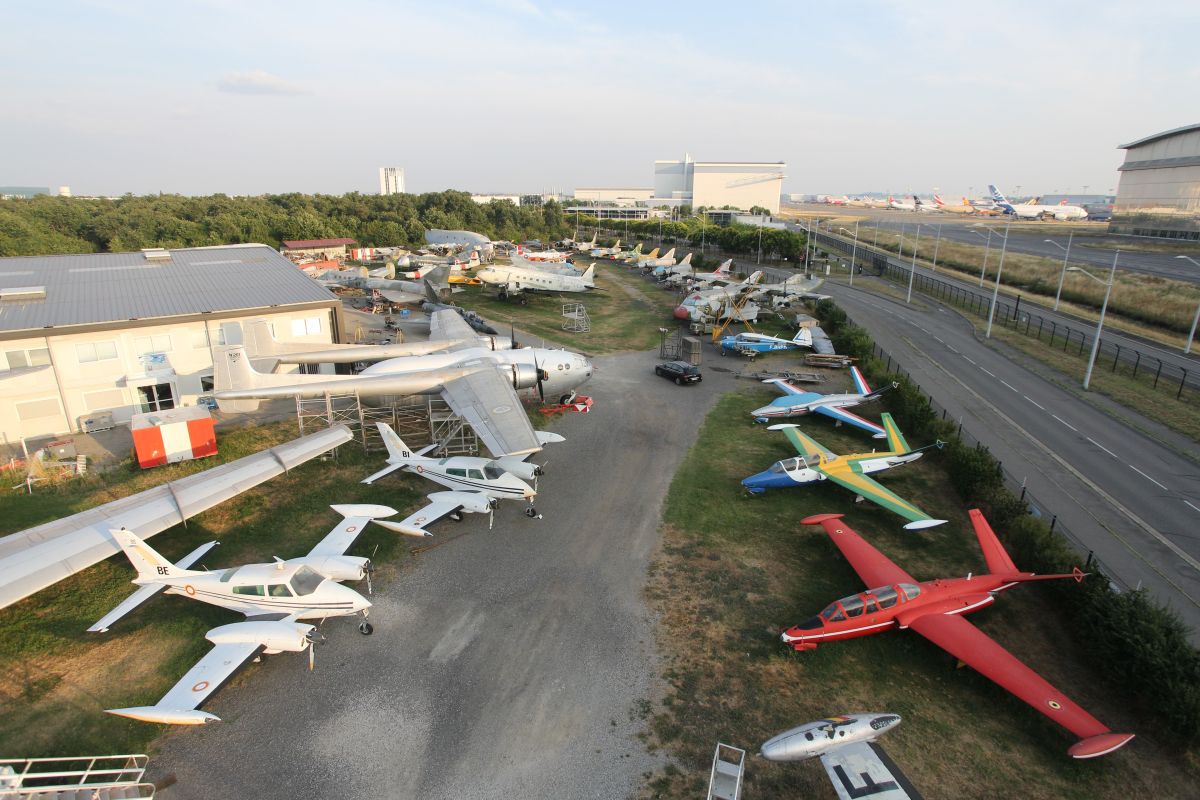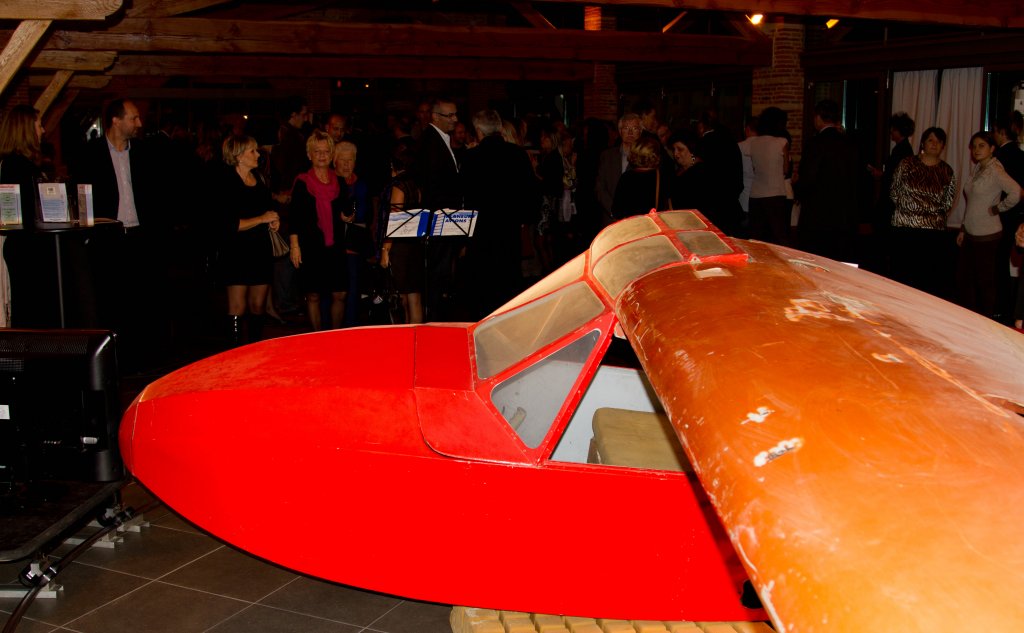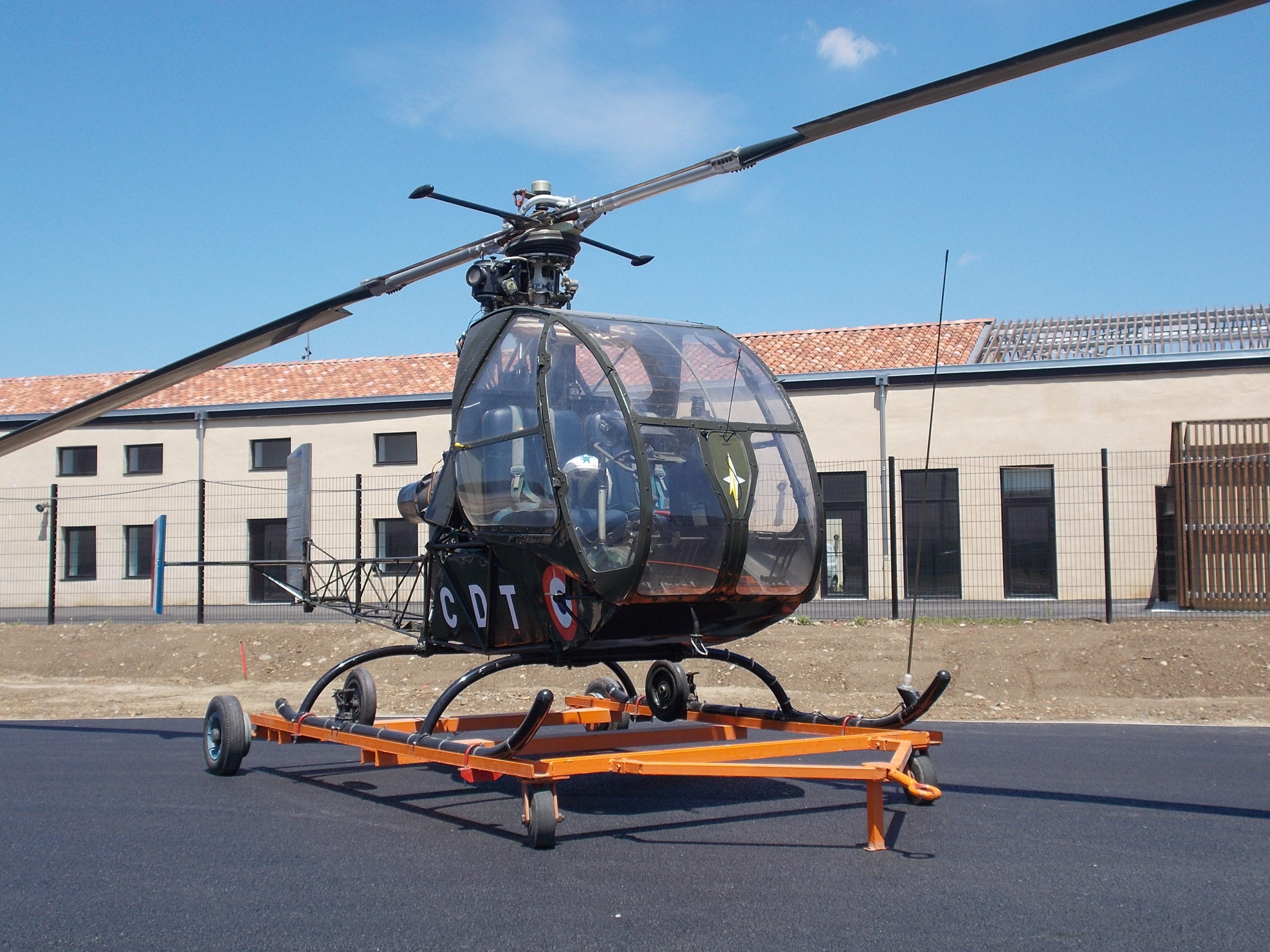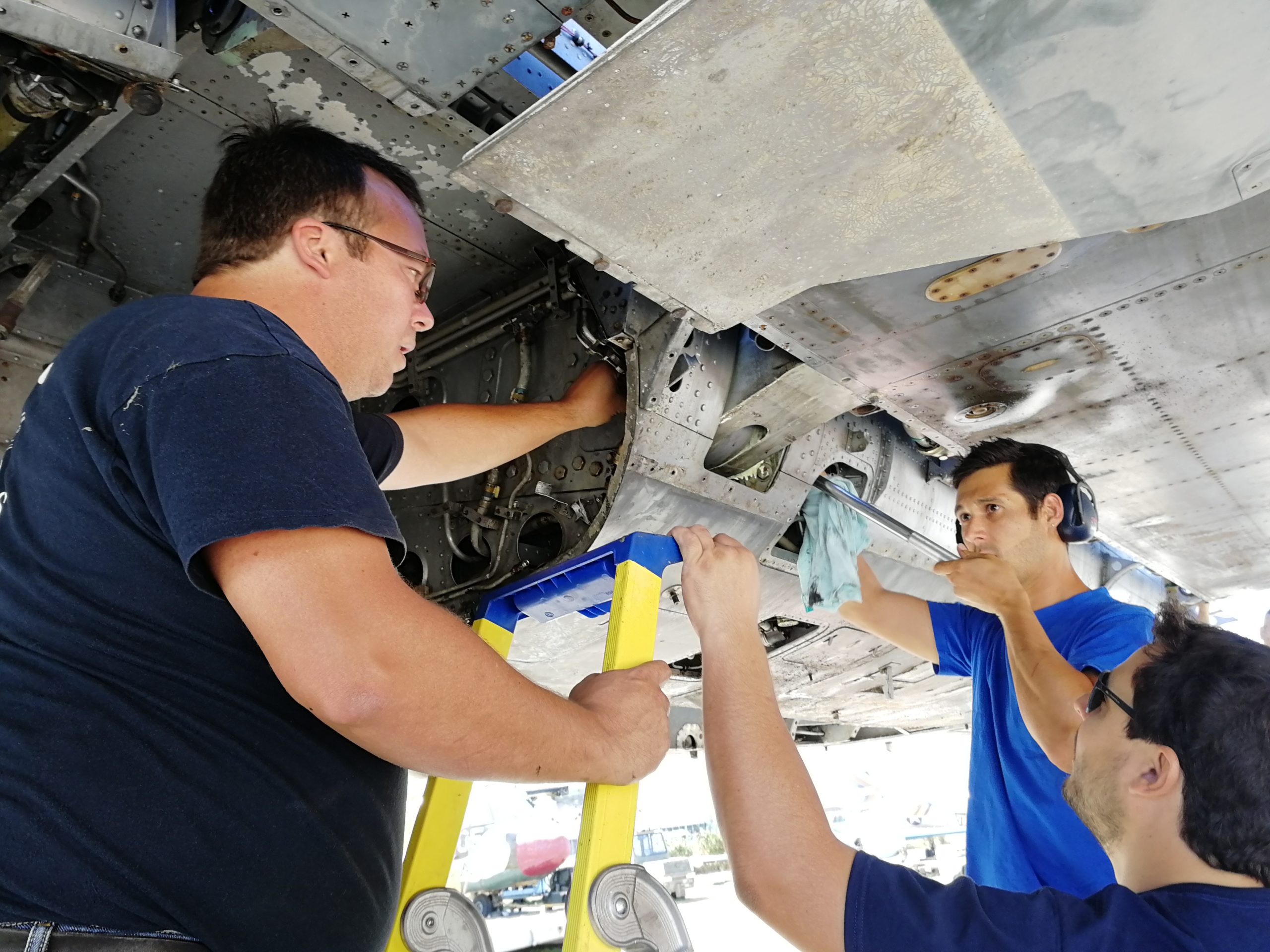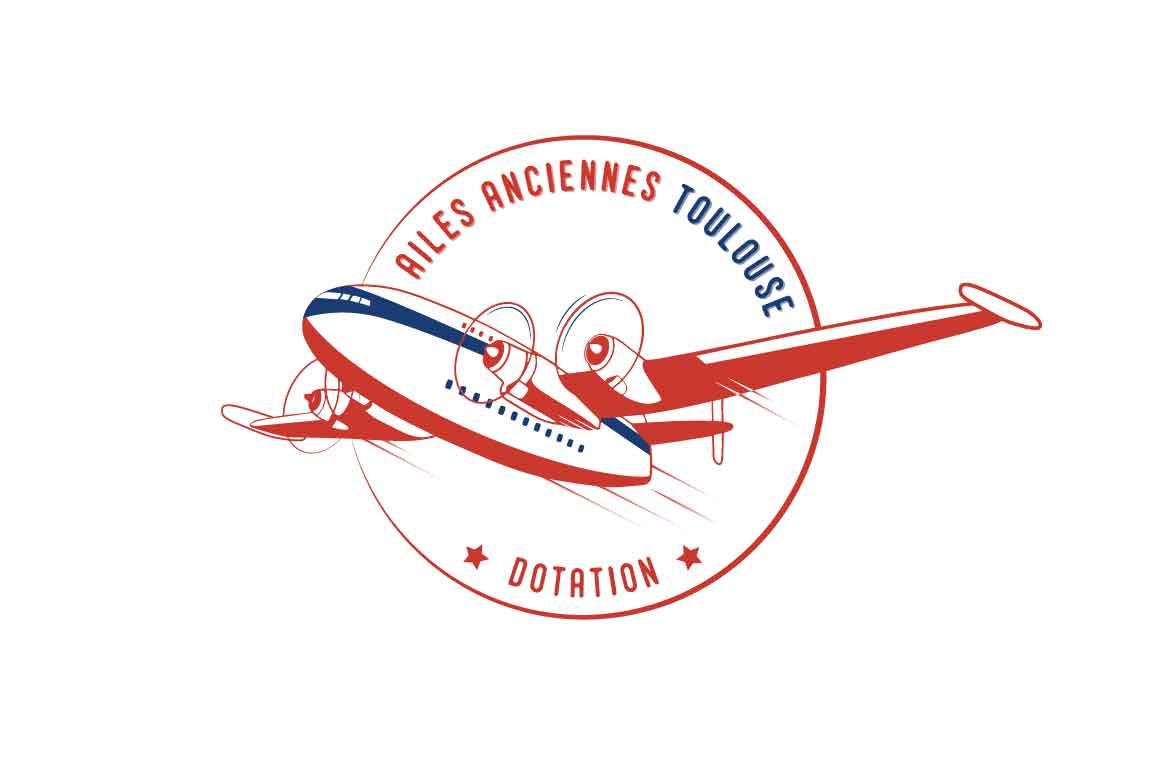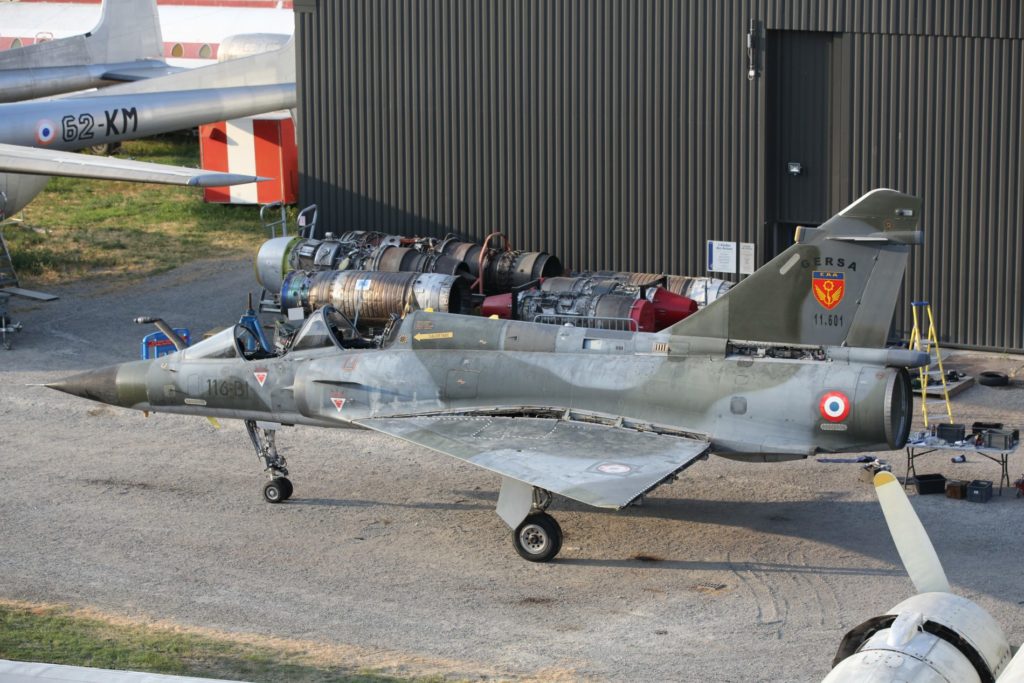
Le Mirage 2000N à la fin de son remontage à l’été 2019

Le Mirage 2000N après son remontage
Historique
Avec le Mirage 2000, Dassault Aviation revient à la formule des avions de combat à ailes delta (cf. les Mirage III, IV et 5). Mais le prototype monoplace qui vole en 1978 bénéficie des dernières technologies en matière de conduite du vol (commandes de vol électriques), de conduite de tir (Radar Doppler Multifonction puis à Impulsions), et d’un moteur plus économique et plus puissant (moteur Snecma M-53 P2 de 9,5 t de poussée).
Livré à partir de 1984 à l’Armée de l’Air française qui en équipera plusieurs escadres, la version 2000C sera suivie du 2000B (biplace pour l’entraînement), puis du 2000-5 (intercepteur) disposant d’une électronique lui permettant de suivre plus de 20 cibles simultanément. En version défense aérienne, le Mirage 2000 pouvait emporter deux missiles air-air Matra Super 530 et deux Magic II pour le combat rapproché. Il embarque maintenant jusqu’à deux missiles MICA-EM et deux MICA-IR.
Des versions biplaces seront également développées. La première, désignée 2000N, est un bombardier stratégique biplace (un pilote et un officier navigateur) chargé de la frappe nucléaire tout-temps à très basse altitude avec suivi de terrain automatique, il disposait alors d’un missile nucléaire moyenne portée (ASMP puis ASMPA). Déployés sur les bases de Luxeuil puis d’Istres, trois escadrons maintiennent l’alerte nucléaire permanente de 1988 jusqu’en 2018.
Enfin, le 2000D, en service depuis 1993, est une version d’attaque conventionnelle dérivée du 2000N. Biplace (un pilote et un officier navigateur-armement), il est capable de pénétration à basse altitude pour délivrer toute une panoplie d’armements : bombes guidées-laser, missile air-sol ‘SCALP’, etc. Il est encore en service et a été régulièrement employé dans les conflits extérieurs (Yougoslavie, Libye, Syrie, Bande sahélo-saharienne.)
Au total, l’Armée de l’Air française recevra 314 Mirage 2000 dans ses différentes versions. S’ajouteront près de 300 exemplaires livrés à huit pays différents dont un grand nombre sont encore en service aujourd’hui : Inde, Qatar, Grèce, etc.
Notre appareil
Il s’agit du Mirage 2000N N°336, bombardier stratégique d’attaque nucléaire. Il est l’un des 74 2000N ayant équipé les escadrons de la 4ème escadre de chasse. Il a servi au sein du prestigieux 2/4 La Fayette, unité héritière de l’Escadrille formée pendant la Première Guerre mondiale par les pilotes américains s’étant engagés à combattre aux côtés des Alliés. Il nous a été affecté en 2019 par l’Armée de l’Air.
Il porte sur le côté gauche de la dérive l’insigne du GERSA (Groupe d’Entretien de Réparation et de Stockage des Aéronefs), insigne n’ayant jamais existé sur les machines de l’Armée de l’Air. Cette dérive n’est pas celle du 336, elle était initialement destinée à être mise en exposition devant le GERSA, raison pour laquelle elle porte cet insigne.
Caractéristiques:
| Longueur : | 14,9 m |
| Envergure : | 9,1 m |
| Hauteur : | 5,2 m |
| Équipage : | 1 pilote et 1 navigateur officier système d’armes |
| Masse à vide : | 7,8 t |
| Masse maximum : | 17,5 t |
| Moteur : | 1 réacteur SNECMA M-53 P2 de 9,5 t de poussée avec postcombustion |
La récupération de l’appareil
Comme souvent pour les appareils appartenant à l’Armée de l’Air, celui-ci se trouvait sur l’EAR (Élément Rattaché Air) 279 de Châteaudun. C’est une équipe de 7 personnes qui s’est chargé de le démonter. Cette opération a duré à peine 4 jours qui comprennent le démontage en lui-même mais aussi la préparation pour le transport et le chargement sur les camions.
Le démontage a été facilité par le fait que l’appareil était en partie démonté.

Notre Mirage 2000N lors de notre arrivée pour son démontage
La première étape lors de ce premier jour fut de mettre l’avion sur chandelles : c’est une étape importante puisqu’on enlèvera les trains d’atterrissage par la suite en vue d’enlever les ailes.
Ensuite, on commence le démontage en lui même avec le démontage des panneaux Karman (les panneaux de jonctions entre l’aile et le fuselage). Une fois cela terminé, c’est au tour des trains d’atterrissage d’être démontés par une équipe pendant qu’une seconde se charge de déconnecter toutes les tuyauteries et câbles entre l’aile et le fuselage.
- Nico et Maxime s’occupent de démonter les trains
- Les 2 Nico en rains de déconnecter les tuyaux et câbles
- Nicolas qui déconnecte la tuyauterie à l’avant
- L’équipe au travail
Une autre opération réalisée : la dépose des 2 verrières qui ont encore leur cordon explosif servant en cas d’éjection. Ces 2 éléments seront conservés par l’Armée le temps que le désarmement ait lieu.
Lors du deuxième jour, pendant qu’une équipe continue de défaire câbles et tuyaux, une autre rentre le train avant dans son logement.
Une fois le train rentré, on positionne les bâti d’aile qui nous permettront de faire reposer les ailes pendant leur retrait.
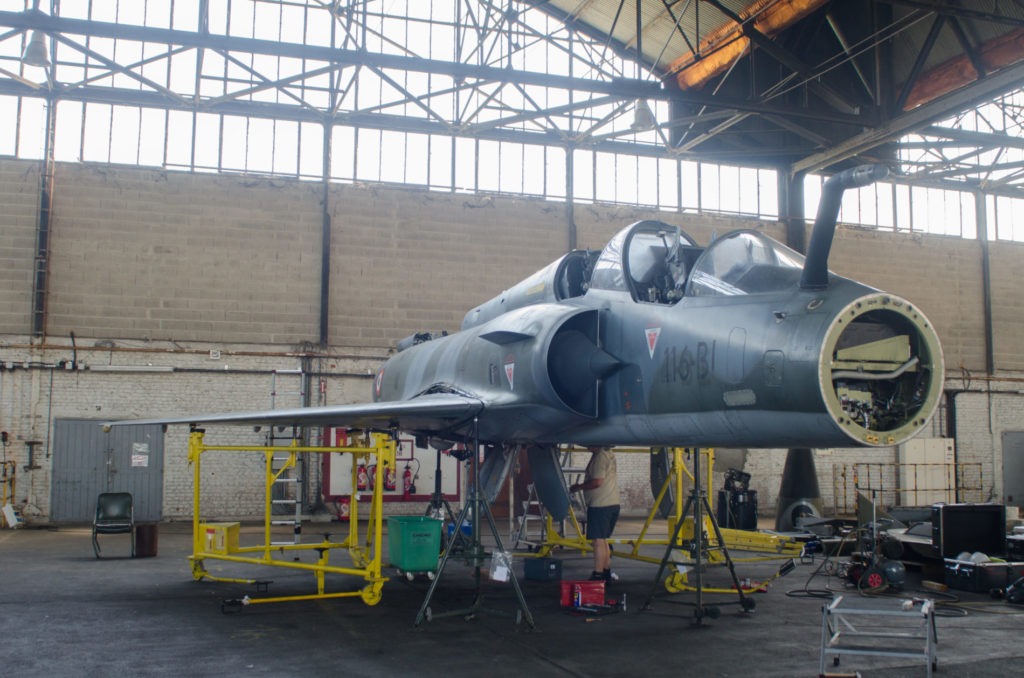
Le Mirage 2000N prêt pour le démontage des ailes
L’avion étant prêt, on s’attaque au démontage des ailes qui s’effectuera en 2 étapes : en premier lieu, on démonte les axes « secondaires » à l’avant et à l’arrière de l’aile. Puis c’est au tour des axes principaux. Au nombre de 4 par ailes , ce sont des axes chemisés conique qu’il est impossible de démonter sans l’outillage adapté.
Avec de la technique et de la patience, les 2 ailes sont finalement démontées !
- Démontage des axes en cours
- Démontage des axes en cours
- Démontage des axes en cours
- Démontage des axes en cours
- Le côté gauche après le retrait de l’aile
- Le Mirage après le retrait des 2 ailes
Le jour trois était consacré à la préparation pour le transport : transfert des ailes sur leurs bâtis de transport et préparation du fuselage.
- Le Mirage avec ses ailes sur bâti de transport
- Mise en place de l’aile sur bâti de transport
- Mise en place de l’aile sur bâti de transport
Le quatrième et dernier jour sera consacré au chargement sur les camions.
- Chargement du fuselage sur le camion
- Le fuselage est chargé et prêt à partir
- Fuselage chargé !
- Ailes Chargées
- Camions au départ !
- En route vers Toulouse
- Le convoi presque entièrement chargé
- Le fuselage est posé sur son bâti de transport
- Chargement du camion transport les ailes
Le samedi, de retour à Toulouse et grâce à l’ensemble des bénévoles, c’est en une journée que l’appareil sera remonté ! Il ne manquera que le remontage des Karman ainsi que des verrières lorsqu’elles nous seront rendues.
- Transport de l’aile
- On s’approche du fuselage avec l’aile
- Montage de la dérive
- Presque entièrement remonté
- Montage du radar
- L’avion entièrement remonté
- Le déchargement du fuselage
- Le déchargement du fuselage
- Le fuselage posé sur chandelle
Les vidéos du démontage, du transport et du remontage :

